
At 91, Jyoti Bhatt still works from his Baroda studio, engrossed in painting, analogue photography and printmaking. The studio is quiet but alive, filled with etched plates, photographic prints, and the gentle persistence of a lifelong practice.
For over a month, Through the Line and the Lens, a landmark retrospective curated by contemporary artist and his student Rekha Rodwittiya (first at Bikaner House and now on exhibit at Latitude 28), has offered more than a tribute to the modernist who has a storied history as an artist and a teacher. Featuring decades of work, the exhibition, the largest to date, is a reminder to us that art holds our rituals, resistances, and everyday textures as forms of remembering. And that Bhatt has spent a lifetime recording them.
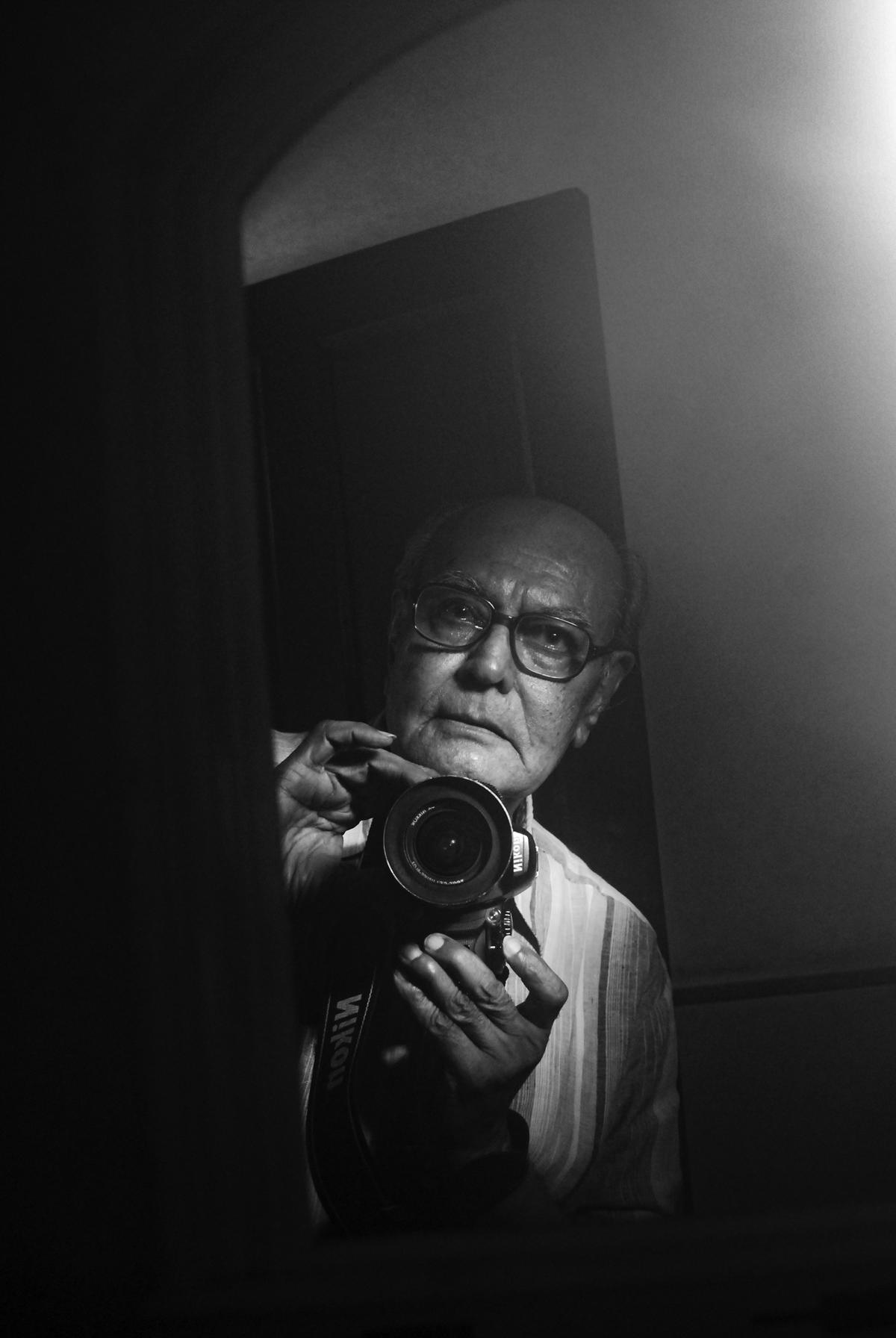
Jyoti Bhatt
| Photo Credit:
Archer Art Gallery
Knowing the artist
Bhatt’s influence runs deep — in how we see pattern, archive the everyday, and build art education in India. He did this not through grand proclamations, but by treating the ordinary as worthy of artistic inquiry. His photographic documentation of rural Indian culture saved for posterity motifs, mural fragments, and the lives of craftspeople with the same care afforded to fine art.
Born in 1934, he came of age with the nation, studied in Baroda, trained in Naples and New York, and returned to shape a distinctly Indian visual grammar. “I didn’t set out to make overt political or social statements, but having grown up in a constantly shifting socio-cultural landscape, those experiences naturally seeped into my visual language,” explains Bhatt over email.
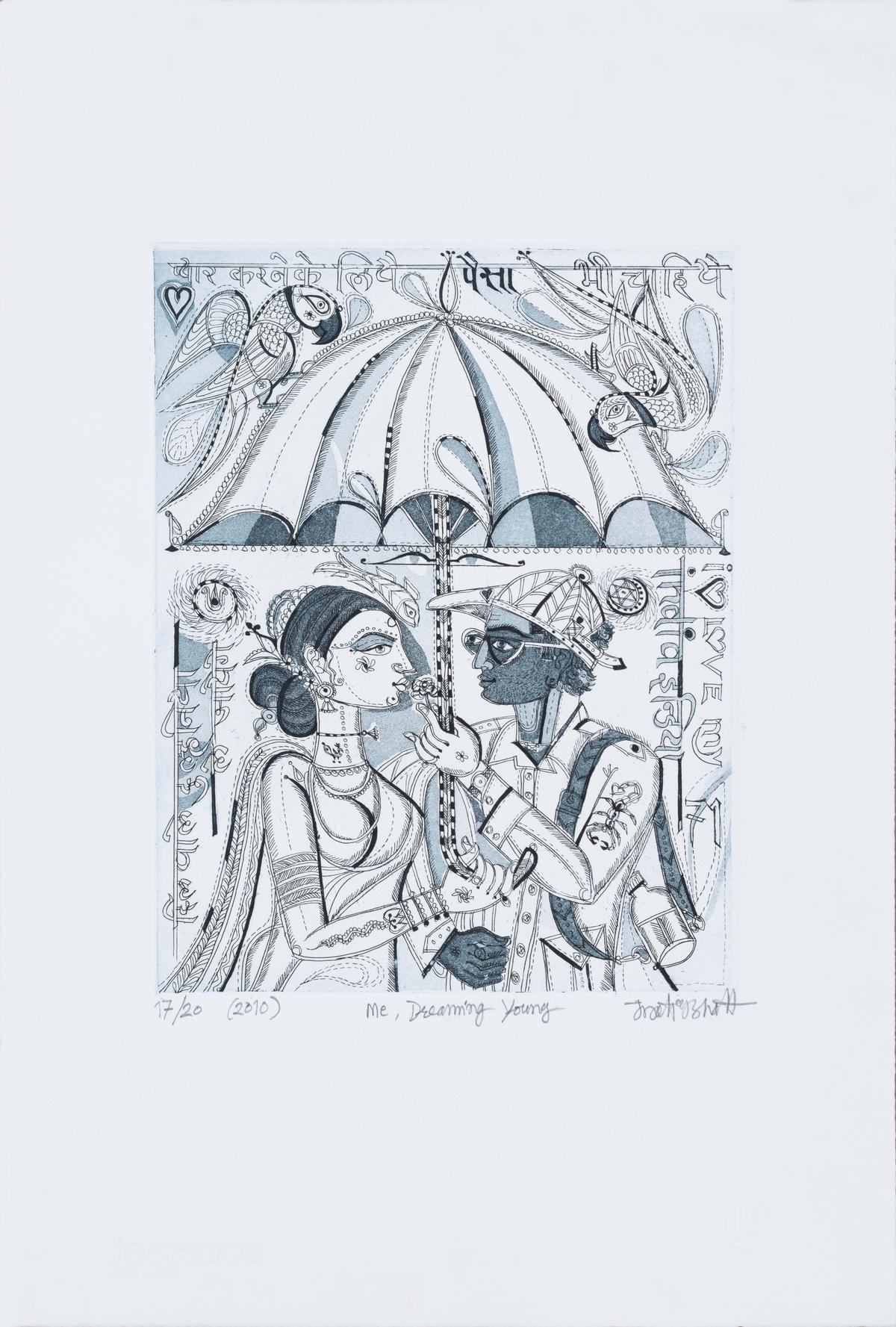
Me, Dreaming Young (etching)
| Photo Credit:
Special arrangement
As a founding figure of the Baroda School, he wasn’t just an artist — he was an institution-builder, whose teaching and practice gave form to how generations would learn, make, and see. This meant designing curricula that integrated Indian aesthetics with global techniques, encouraging interdisciplinary work, and mentoring students to develop their own voices, including Rodwittiya.
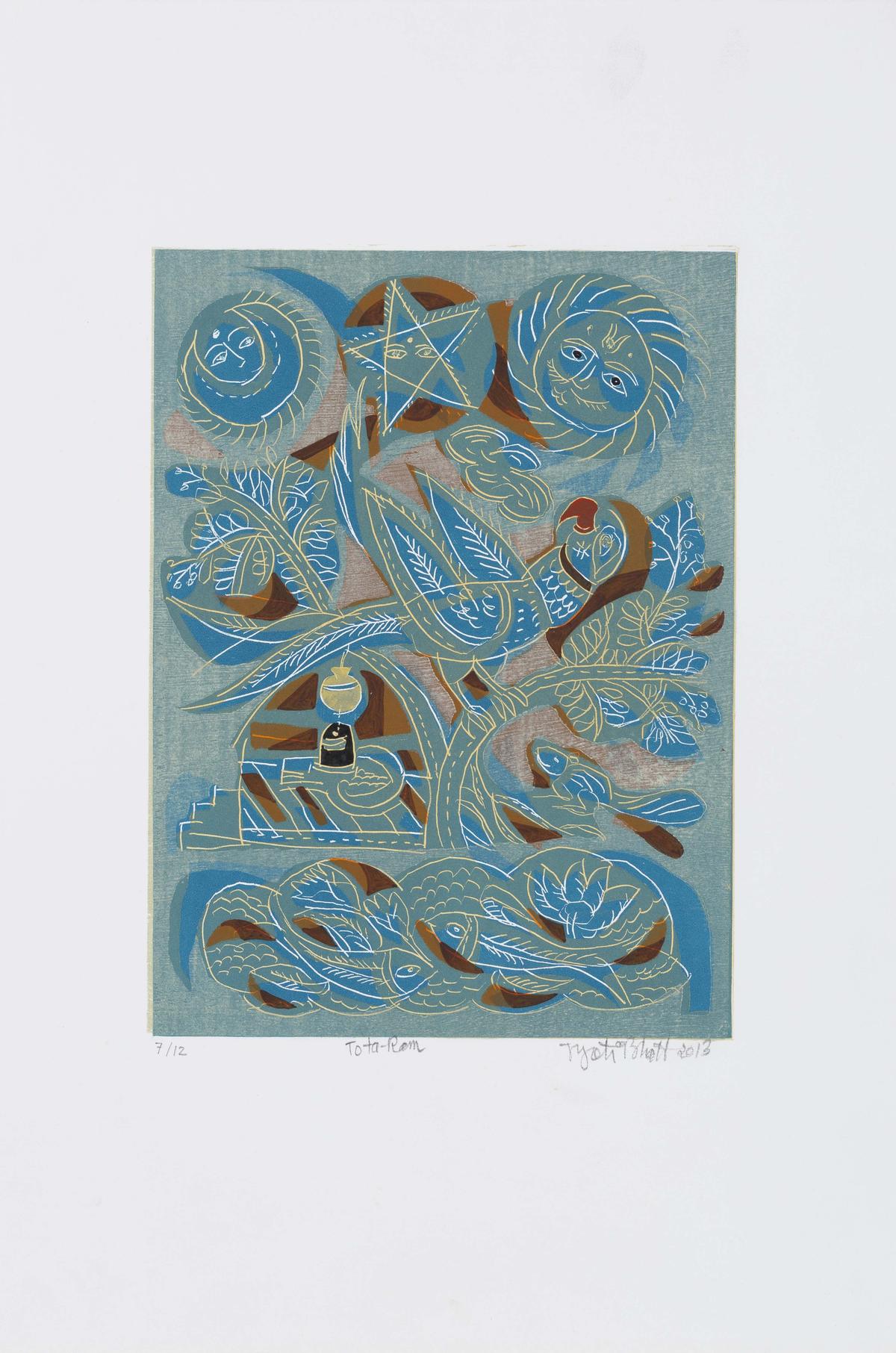
Totaram (etching)
| Photo Credit:
Special arrangement
Discrediting systems of elitism
When painting dominated modernist imagination, Bhatt turned to printmaking, then considered minor, and made it affordable, replicable, and subversive. Later, he took to photography with the same care. Hespent years building a visual archive — not just of his own work, but of his peers and the communities he admired — quietly preserving traditions that were at risk of vanishing.
“Printmaking and photography enabled me to bridge aesthetics with accessibility,” he says. Both mediums became ways of remembering. “Today, with digital technologies, these mediums continue to serve as powerful, democratic tools — challenging hierarchies and expanding the boundaries of contemporary Indian art,” he adds.
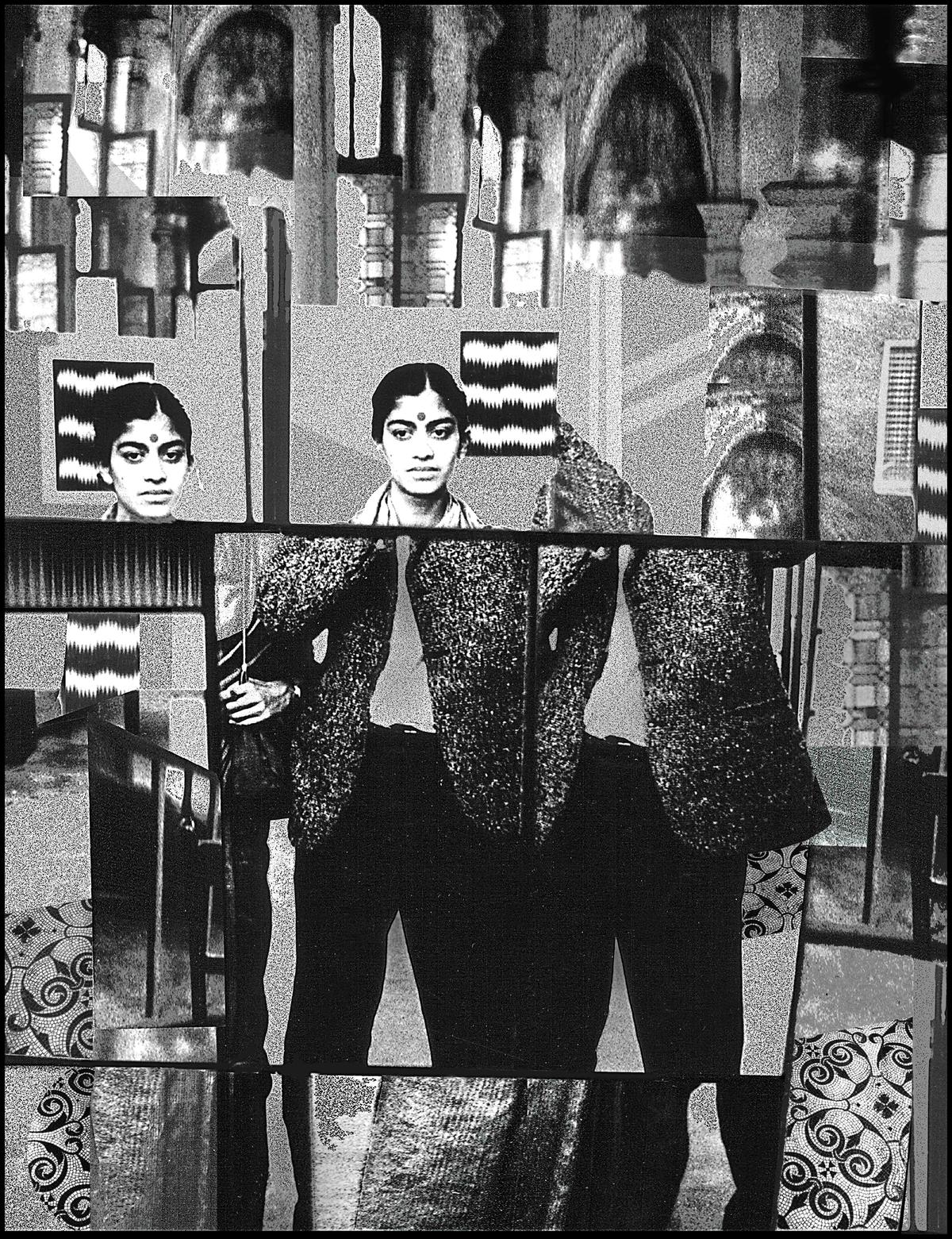
Ardhanarishwar, Venice, 1966
| Photo Credit:
Special arrangement
For Bhatt, art and pedagogy were inseparable. At M.S. University, Baroda, he helped shape not just artists but an entire ecosystem of making, thinking, and documenting. He had a long and formative career as a teacher — building institutions through critical dialogue, collective workshops, and a refusal to isolate art from its social and material contexts. His legacy lives in the questions he posed, the tools he passed on, such as techniques in intaglio printmaking, field-based research, and ways of visually coding memory through symbolic motifs.
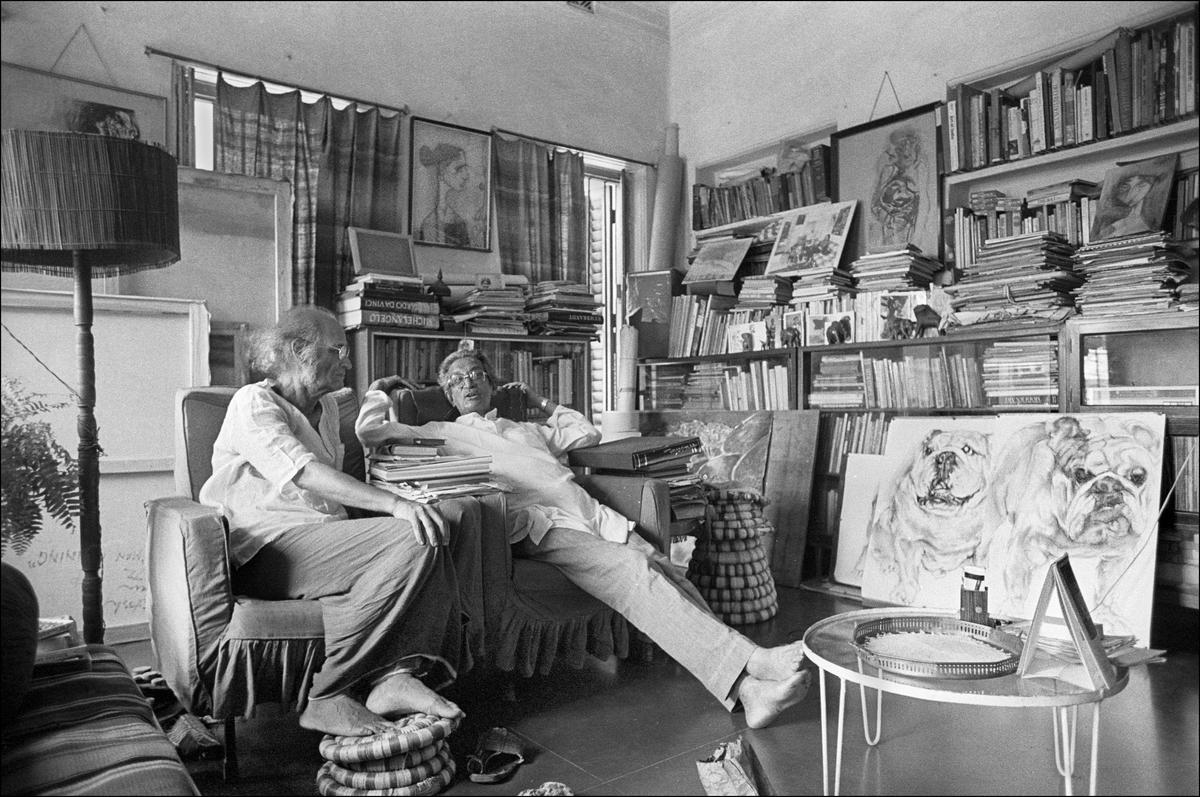
Artist Paritosh Sen (left) and sculptor Sankho Chaudhuri photographed by Bhatt
| Photo Credit:
Special arrangement

“I found myself documenting my friends and family, my travels and daily meetings, fine art fairs, exhibitions. Ultimately, photography turned out to be a tool for me to observe and preserve the vanishing rural artistic traditions in the face of modernity. I believe personal identity creates collective memory, which comes out most vividly in self-reflective forms of conversation.”Jyoti BhattArtist
Graphic prints and politics
Bhatt’s brilliance lies in giving symbolic detail real weight. He doesn’t just document folk motifs, he enters into conversation with them. He renders them with humour, sharpness, and sometimes irony. In one print, a goddess stands beside a consumer logo; in another, a parrot speaks with near-human mischief.

The Tree (Kalpavruksh; etching -1978)
| Photo Credit:
Special arrangement
“In the graphic prints we see how Bhatt often uses subversive inflections as a means by which he positions his politics, and the critique he has of establishments that he views as retrogressive to the ideals of pluralism and liberal thinking,” says Rodwittiya. She sees this not as polemic, but as quiet dissent — delivered through linework, wit, and deeply embedded references.

“This exhibition marks a significant milestone in both scale and substance. [But] what makes it truly special is the personal investment behind it. I have been collecting Jyoti Bhatt’s printmaking works over the years with deep admiration and intent. Aside from a few early pieces loaned from private collections and the artist’s own archive of photographs, nearly 75% of the works on view belong to Latitude 28. This makes the exhibition not only a tribute to one of India’s most important modern artists, but also a reflection of a long-standing commitment to his legacy.”Bhavna KakarFounder-Director, Latitude 28

Kolam Forms (etching)
| Photo Credit:
Special arrangement
Why he matters
Through his work and teaching, Bhatt reminds us that institutions matter — as ecosystems of exchange, care, and critique. In a time when the formal study of art is undervalued, and pedagogy reduced to metrics, his life’s work is a blueprint for what thoughtful, long-view cultural stewardship can look like. For instance, his collaborative efforts to bring rural and urban practices into the same academic frame helped dismantle narrow hierarchies of knowledge.
Bhatt’s prints are more than ink on paper — they are maps of how a country might come to know itself.
‘Through the Line and the Lens’ is on till May 25 at Latitude 28.
The essayist and educator writes on design and culture.
Published – May 22, 2025 07:47 pm IST











